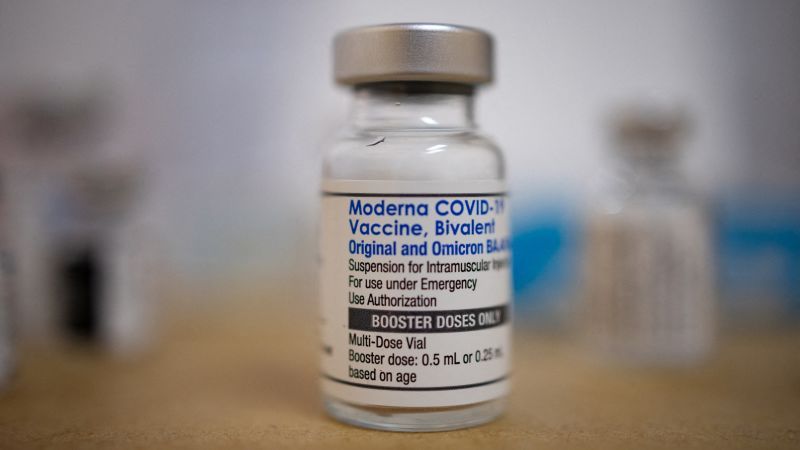Is the new Covid-19 booster for you? Our medical analyst explains
CNN —
Is it time for another Covid-19 vaccine booster? It’s the question many people are asking their doctors, given what happened last week — the US Food and Drug Administration amended their authorization to allow for a second bivalent booster for certain individuals most vulnerable to severe outcomes from Covid-19. The US Centers for Disease Control and Prevention subsequently signed off on the FDA’s update and added additional clinical considerations to guide healthcare providers and patients.
I have lots of questions. Who is eligible for the second bivalent boosters? Is the composition of the booster the same as before? If someone receives the booster now, can they get another booster in the fall? What if someone isn’t in one of these high-risk groups, but lives with a high-risk family member? And how has the guidance changed for people who haven’t had the first booster yet, and those who remain unvaccinated?
To track down some answers, I reached out to CNN medical analyst, Dr. Leana Wen. Wen is an emergency physician and professor of health policy and management at the George Washington University Milken Institute School of Public Health. She previously served as Baltimore’s health commissioner.
CNN: Can you bring us up to speed with the major updates — who is now eligible to receive the second bivalent booster?
Dr. Leana Wen: There are two groups who are now able to receive a second bivalent booster.
First, it’s people ages 65 and over. Since very early in the pandemic, we’ve known that older individuals are among those most susceptible to severe outcomes from Covid-19. These individuals are newly able to receive their second bivalent booster if it’s been at least 4 months since their first bivalent shot.
Second, it’s immunocompromised people. The new guidance from the CDC is that anyone 6 and older with moderate or severe immunocompromise can receive a second bivalent booster if it’s been at least two months since their first. They should also consult with their physicians; depending on their specific medical circumstances, they may be able to receive the bivalent booster as frequently as every two months.
CNN: Is the composition of the booster the same as before?
Wen: The bivalent booster I’m referring to is the updated booster that first became available in fall 2022, that targets both the original strain of the coronavirus as well the BA.4/BA.5 omicron subvariants. Studies have shown that this booster continues to be effective against commonly circulating strains when it comes to the important metrics of reducing severe illness. Those newly eligible for their second shot would receive this bivalent booster once again. It’s not an option to select the original monovalent shot, and no other type of booster is available.
CNN: If someone receives the booster now, can they get another booster in the fall?
Wen: It’s possible that there will be an updated version of the booster made available in the fall that will more specifically target dominant variants in circulation. The individuals who are newly eligible to receive the second bivalent booster are vulnerable people who, almost certainly, would be the same first groups eligible to receive another Covid-19 vaccine in the fall. All this is to say that people should not be dissuaded from getting a booster now thinking that it will preclude them from another vaccine later.
CNN: What if someone isn’t in one of these high-risk groups, but lives with a high-risk family member?
Wen: That person would not be eligible themselves. The Covid-19 vaccines are very good at reducing the risk of hospitalization and death for the person who gets vaccinated. For a short time, it reduces the risk of infection, but that effect is muted and temporary. Federal health officials have not authorized family members or caregivers of high-risk individuals to get the second bivalent booster, and I think this is the right decision based on scientific evidence.
There are other ways to reduce your risk of contracting Covid-19 and spreading it to someone close to you. Those methods include regular testing, especially when symptomatic or after exposure to an infected person, and wearing a high-quality mask in crowded indoor spaces.
CNN: How has the guidance changed for people who haven’t had the first booster yet, and those who remain unvaccinated?
Wen: It’s actually changed quite a lot. The CDC is aiming to simplify the vaccine recommendations and made several important changes.
To begin with, the bivalent vaccine is going to be the single vaccine made available. The original monovalent vaccine is not going to be used any more, even in people who have not yet been vaccinated. This will help to simplify vaccine administration, as pharmacies no longer need to keep both types of vaccines on stock.
In addition, unvaccinated people 6 years and older will be considered up to date on vaccines if they received just one dose of either the Pfizer-BioNTech or Moderna bivalent booster. The thinking here is that most unvaccinated people in this age group have already contracted Covid-19, and one dose of the updated booster is sufficient to convey added protection.
People who have received prior coronavirus vaccines will still need at least one dose of the bivalent booster in order to be considered up to date. That is, even if an individual received three or more doses of the original monovalent vaccines, they are still not considered up to date unless they received at least one bivalent dose. This is an important point, as CDC data show that fewer than one in five people eligible to receive the first bivalent dose have gotten it; that means, according to their new definition, less than one in five Americans previously considered fully vaccinated are actually up-to-date on their Covid-19 vaccines.
CNN: What’s the bottom line — should people newly eligible to get boosters do so right away?
Wen: I think that people newly eligible should speak with their physicians about what’s right for them. The CDC issued what’s called a permissive recommendation, which means that people can choose to get that additional booster if they wish. A generally healthy 65-year-old who recently had Covid-19 could choose to wait until the fall to get another booster. But an 89-year old with kidney disease and a history of stroke and heart attacks, and who is not eligible to take the antiviral treatment Paxlovid, may want every level of protection possible, including with the additional booster.
In my view, this permissive approach to additional boosters is in line with where we are at this point of the Covid-19 pandemic: People should choose the level of protection most appropriate for them, based on their individual medical circumstances.
Source: CNN


